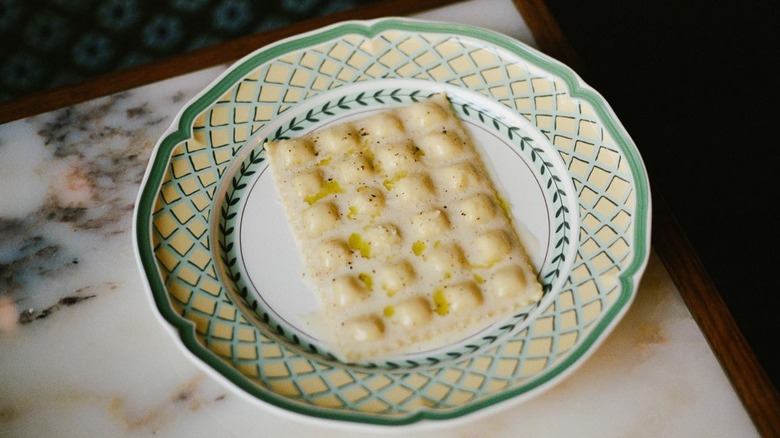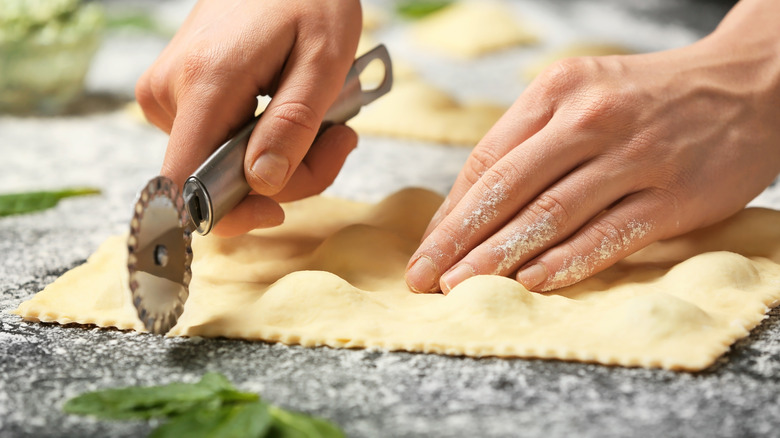Ravioles Du Dauphiné Are A French Take On An Italian Pasta Classic
A new pasta dish is taking over the internet. Just by looking at it, one might guess it's Italian, but it actually comes from France. Ravioles du Dauphiné is like the French version of Italian ravioli, only the pasta is smaller and includes French cheese instead of Italian varieties such as ricotta and mascarpone. As with most pasta dishes, it's comforting and easy to fall in love with. These days, the trendy way to eat them in the U.S. is in long, uncut pasta sheets. However, in France, ravioles du Dauphiné are usually broken apart into individual pieces.
The popularization of ravioles du Dauphiné in the U.S. began in NYC, where people discovered them on the menu at Café Chelsea, a French restaurant that opened earlier this year. People took to this dish's simplistic yet elevated feel, and by word of mouth (which these days means through social media posts), ravioles du Dauphiné has gone from being a little-known dish to something everyone wants to try.
There are many ways to eat ravioles du Dauphiné
Raviole du Dauphiné's origins date back to the 13th century. As its name implies, this pasta comes from Dauphiné, a region of France with a rich history and culture. This regional specialty was once filled with meat or turnip leaves, but today, you can find it stuffed with a blend of Comté cheese, parsley, or other French cheeses and herbs. The way you eat them (or what you eat them with) varies. The classic way is with a butter sauce and a little bit of grated cheese, or as at Café Chelsea, an elevated Vin Jaune (a specialty French wine) and butter sauce. Ravioles du Dauphiné also tastes amazing when prepared au gratin, browned in some grated cheese and bread crumbs.
Perhaps the most unique aspect of this dish, and why it has been such an attention grabber, is its presentation. Although diners don't eat ravioles du Dauphiné in unbroken sheets in France, the pasta comes this way when bought fresh. Presenting the pasta in this manner is innovative and sets the U.S.'s take on this dish apart. Other things, like adding lemon zest or making a brown butter sage sauce, can bring subtle layers of complexity to this elegant dish.

